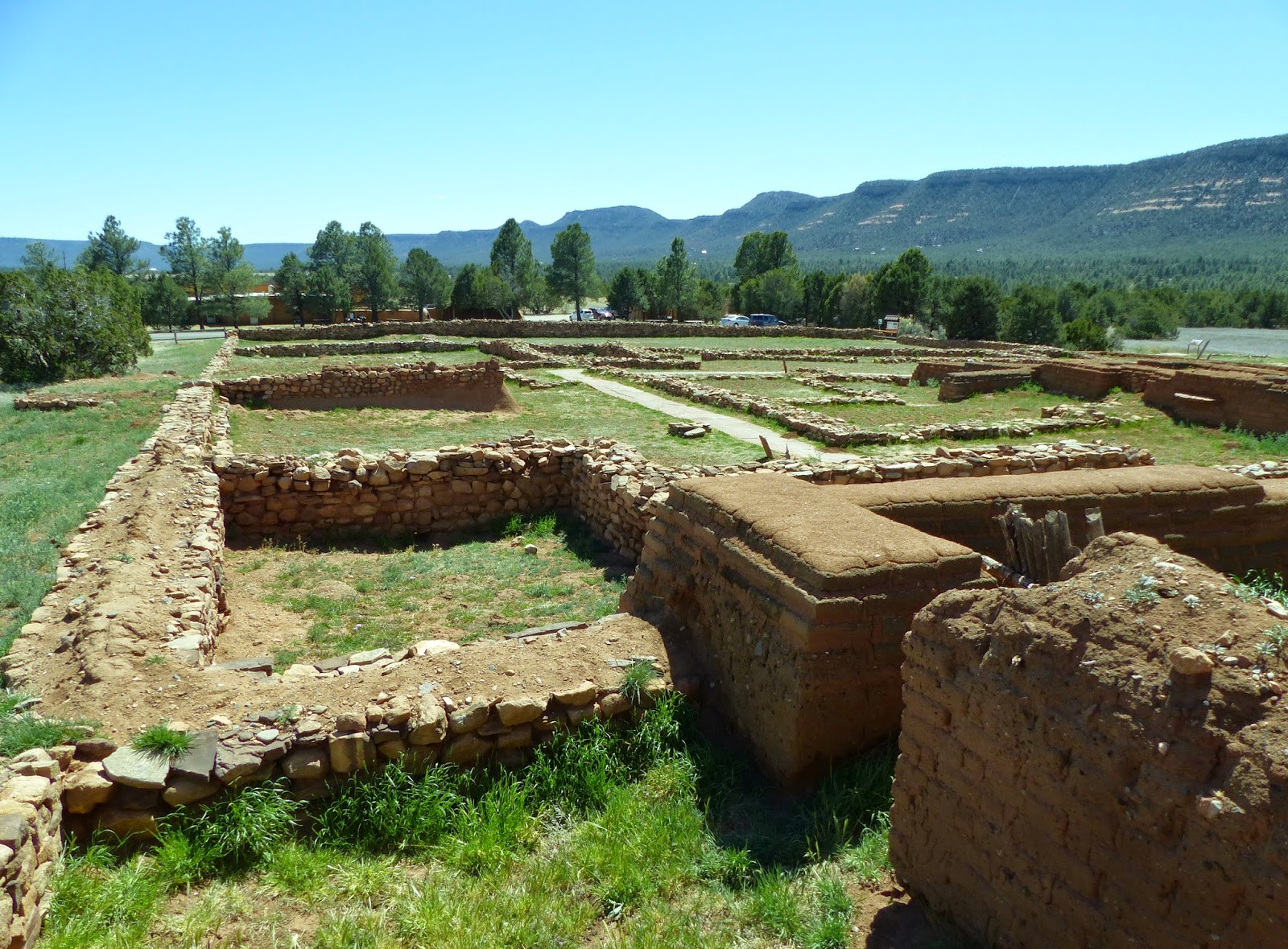 Unless you've been to northern New Mexico, you've probably never heard of Pecos National Historical Park. (I actually thought Pecos was in Texas, and it is--this is another one.) What the two towns have in common is the Pecos River, sort of that river-runs-through-it theme.
Unless you've been to northern New Mexico, you've probably never heard of Pecos National Historical Park. (I actually thought Pecos was in Texas, and it is--this is another one.) What the two towns have in common is the Pecos River, sort of that river-runs-through-it theme.History Alert: You've got to assume that a park that has Historical as its middle name isn't about geology. Just look at the pictures if you want.
The museum in the Visitor Center documents the history from archaic trading tribes who eventually prospered and consolidated to build a town, to Spanish conquerors and missionaries to a Civil War Battlefield. I learned more than George did because he was talking to the Visitor Center volunteers while I was wandering this surprisingly large museum.
A long time ago there were Pueblo Indians who were basically traders. By 1450 they built a huge pueblo that housed about 2,000 people in a 5-story fortress. Life was good. Then Coronado came looking for the Cities of Gold...didn't find them in Kansas (duh!) so he left. Sixty years later the Spanish came back with missionaries and built a a huge adobe church south of the pueblo. The Pecos Indians put up with them for awhile, then revolted and destroyed the church. Twelve years later the Spanish (obviously a stubborn breed) came back. This time they built a much smaller church, but eventually everyone left and the pueblo and the mission decayed to what it is now. (If you want to fill in the very large blanks above, check out the museum.)
The trail starts behind the Visitor Center and goes up past that rock wall and around the hill to the mission. The hill isn't a standard hill; it's where the original pueblo stood. Now it's crumbled and filled over with dirt. (If you wonder how a 5-story village could be covered up in a few hundred years, you've never been in New Mexico in the springtime.)
This rock wall was part of the pueblo wall. Takes a lot of rock to built a wall to protect 2,000 people!
Pueblo Indians build kivas for religious ceremonies. They're sort of a pit house, with a cover. This one has been rebuilt. The thing that looks like a sundial is a ladder sticking up out of the door in the roof down into the kiva. We climbed down...it's pretty cool. The rocks by the ladder are actually a deflector for the fire pit, which I think is pretty clever.
We kept walking up the hill past small pueblo ruins. The trail guide says 2/3's of the pueblo remains in the unexcavated mound. (It's difficult around ancient ruins to be able to tell the difference between a rock and a rock used for a house. These pretty much look like plain rocks to me. I guess that's why the archaeologists don't excavate it all.)
Around the corner and a little further on are the ruins of the last church built in the footprint of the first one. (I think both churches were named "Mission of Our Lady of the Angels of Porciuncula", but don't quote me on that. In fact, you probably shouldn't quote me on much of anything.) The info picture shows it better than I can describe it. The white overlay on the picture of what's there now shows how big the original mission was.
The first church was destroyed during the revolt, but the second doesn't seem to be fairing well either. Adobe isn't the most durable of building materials.
It was really windy--George had to hang on to his hat!
The south pueblo ruins are right next to the church.
There's a kiva.
And these rocks are neither house nor ruins. They're cobblestones in a turkey coop. Apparently the cobblestones were easy to clean and drain, although I didn't see any hoses. The cages went on the other side. The Pecos used turkey feathers for blankets. (I had to think about this a bit. I thought they pulled all the little feather pieces off the shaft and then spun them like wool, but when I checked on Google, they look like little feather tufts sticking out all over. Hmmm.)
Remember I said there was a Civil War battlefield here too? (If you didn't, that's okay, it's not a test.) The Battle of Glorieta Pass took place near here. We didn't have enough time to go check it out, but we did stop at the National Historic Landmark sign. Perhaps another time...
Click the link for more pictures at Pecos NHP.




.JPG)




.JPG)






Post a comment.
Post a Comment
Please leave comments here: